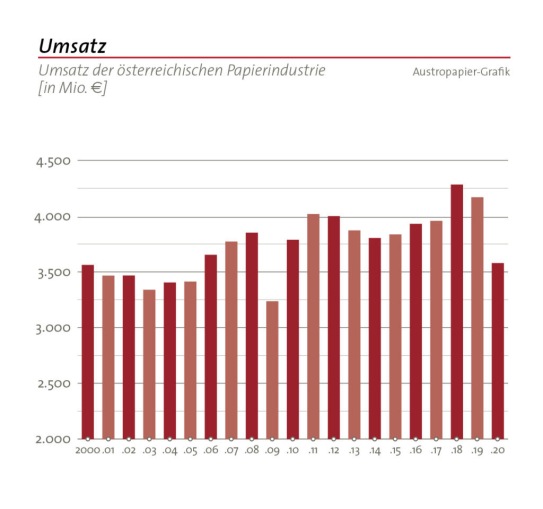Globaler Spitzenreiter der produzierten Industriechemikalien ist
Schwefelsäure. Mit rund 300 Mio. Tonnen jährlich gehört sie zu einer der wichtigsten Chemikalien, die in vielen chemischen Prozessen eine bedeutende Rolle spielt. Ein Ende der extremen Verknappung von Schwefelsäure ist derzeit aber noch nicht absehbar.
Welche Folgen dies bei gleichbleibenden wirtschaftlichen Rahmenbedingungen bald haben könnte, zeigen wir anhand der wichtigsten Industrien in einem kurzen Überblick auf.
Düngemittel-Industrie
Schwefelsäure kommt vor allem bei der Herstellung von Phosphorsäure und Ammoniumsulfat zum Einsatz. Diese sind wiederum Hauptbestandteil der meisten chemischen Düngemittel. Ammoniumsulfat Dünger werden durch Reaktion von Schwefelsäure mit Ammoniak hergestellt. Bei der Herstellung von Phosphatdünger werden große Mengen an Schwefelsäure zum Aufschluss des Rohphosphates benötigt, bei der Reaktion entsteht Superphosphat Ca(H2PO4)2/CaSO4.
Fazit:
Die Produktion von Düngemitteln ist der wichtigste Endverbrauchermarkt für Schwefelsäure und macht 2020 über 60 Prozent des gesamten Weltverbrauchs aus. Eine fortgesetzte Verknappung von Schwefelsäure wird daher zwangsläufig zu einer Verknappung von Düngemittel führen. Der weltweite Bedarf an Düngemitteln beträgt ca. 2,4 Mio. Tonnen (2019).
Papierindustrie
Neben Ammoniumsulfat werden auch weitere Sulfate durch entsprechende Umsetzung mit Schwefelsäure hergestellt. Beispielhaft zu nennen sind hier Aluminiumhydroxid und Aluminiumsulfat, welche in großen Mengen in der Papierindustrie und als Flockungsmittel in der Wasserreinigung eingesetzt werden.
Schwefelsäure wird außerdem zur Zellstoffproduktion verwendet. Zellstoff ist vor allem für die Produktion von grafischen Papieren und Tissuepapieren (WC-Papier, Taschentücher, Papierwindeln, etc.) von Wichtigkeit.
Die Österreichische Papierindustrie produzierte im Krisenjahr 2020 weniger und musste Umsatzeinbrüche von minus 14,2 Prozent in Kauf nehmen – ein Minus, das vor allem durch das Nachfrageloch bei grafischen Papieren, aber auch durch deutlich niedrigere Verkaufspreise bei Zellstoff und Papier erklärt werden kann.
Mit der schrittweisen Öffnung ist wieder eine erhöhte Nachfrage nach grafischen Papieren zu erwarten. Beispiele wären Speisekarten im Gastro-Bereich, Werbung für Veranstaltungen, Reisekataloge oder die Magazin-Auflage beim Friseur.
Fazit:
Fehlende Mengen an Schwefelsäure und Sulfaten gehen zu Lasten der Papierproduktionsmengen und könnten die Papierindustrie bald unter Druck bringen.

Quelle:
Austropapier
Erzproduktion
Schwefelsäure ist eine kritische Komponente für die Metallherstellung. Da zahlreiche Erze in Schwefelsäure löslich sind, wird die Chemikalie vielfach als Aufschlussmittel in der Erzproduktion eingesetzt.
Als Beispiele können das nasse Verfahren zur Zinkherstellung aus Zinkoxid und das Sulfatverfahren zur Gewinnung des Weißpigmentes Titandioxid genannt werden. Zink ist ein wesentliches Element für die Herstellung von verzinkten Materialien sowie notwendig für den Korrosionsschutz. Titandioxid wiederum ist ein wichtiger Bestandteil in Farben, Putzen und Anstrichen.
Mit Schwefelsäure lassen sich aber nicht nur oxidische Erze, sondern auch zahlreiche Erze mit diversen anderen Anionen wie Fluorid oder Phosphat aufschließen. Bei der Reaktion entstehen technisch wichtige Säuren wie Phosphorsäure, Flusssäure oder Salzsäure. Mit Hilfe von Schwefelsäure können außerdem Uranerze aufgeschlossen werden.
Fazit:
Bei mangelnder Verfügbarkeit von Schwefelsäure zur Aufschließung von Erzen werden unweigerlich nachgelagerte Industriezweige in Mitleidenschaft gezogen, die Metalle oder technische Säuren für ihre Produktion benötigen.
Automobilindustrie
Als Batteriesäure ist 30-38 prozentige Schwefelsäure der wesentliche Säurebestandteil von Bleiakkumulatoren, die das Starten eines Fahrzeugs erst möglich machen. Bleisäure-Batterien kommen sowohl in Autos mit Verbrennungsmotor als auch in Hybrid- und Elektrofahrzeugen zum Einsatz und sind die meistgenutzten Akkumulatoren überhaupt. Mit rund 90 Prozent haben Bleisäure-Batterien den größten Anteil am weltweiten Batteriemarkt.
Schwefelsäure wird zudem in der bergbaulichen Produktion von Lithium eingesetzt, wobei rund 60 Prozent der globalen Lithiumproduktion aus dem Erzbergbau stammt. Lithium wird wiederum zu mehr als 37 Prozent der weltweit eingesetzten Menge zur Herstellung von wiederaufladbaren Batterien verwendet. Darunter fallen neben Batterien für elektronische und industrielle Produkte, vor allem Lithium-Ionen-Batterien für E-Autos, Hybridfahrzeuge und E-Bikes.
Fazit:
Schwefelsäure ist ein wichtiger Rohstoff für die Produktion von Fahrzeug-Batterien und trägt somit erheblich zur modernen Mobilität bei. Angesichts der weltweiten Chip Krise befürchten Autobauer bereits kurz- und mittelfristig Probleme bei der Produktion ihrer Fahrzeuge. Der Schwefelsäure Engpass dürfte diese Situation noch verschärfen.
Fraglich ist auch, inwieweit die ambitionierten Ziele zum Ausbau der Produktionskapazitäten für Batteriezellen unter den aktuellen Rahmenbedingungen umsetzbar sein werden. Nach Schätzungen des Fraunhofer ISI sollen in Europa bis 2025 insgesamt 300 bis 400 GWh/a Produktionskapazitäten entstehen und bis 2030 rund 500 bis 600 GWh/a.

Quelle:
Fraunhofer Institut
Tenside
Anionische Tenside, wie Alkyl-Sulfate, Ether-Sulfate, Alkyl-Sulfonate benötigen in der Herstellung Schwefelsäure zur Sulfatierung bzw. Sulfonierung. Die wichtigste Anwendung von anionischen Tensiden ist die Sparte Wasch- und Reinigungsmittel für den Haushalt, da sie als waschaktive Substanzen die Ablösung von Schmutz erleichtern. Eine steigende Nachfrage ist zudem bei kosmetischen Produkten wie Hautpflege- und Haarpflegeprodukten zu beobachten.
Fazit:
Anionische Tenside machen etwa die Hälfte des Gesamtanteils am Tensid Markt aus. In naher Zukunft wird der wachsende Fokus auf Umweltvorschriften die Nachfrage zusätzlich erhöhen. Ein Einbruch der Produktionsmengen an Schwefelsäuren würde sich demnach entsprechend stark auf Haushalts- und Körperpflegeprodukte für den notwendigen täglichen Gebrauch auswirken.
Sprengstoff-Industrie
Als Nitriersäure (Mischung aus Schwefel- und Salpetersäure) ist Schwefelsäure zur Herstellung von Sprengstoffen wie Trinitrotoluol (TNT) oder Nitroglycerin in Verwendung. In der industriellen Anwendung haben Sprengstoffe ein breites Spektrum. Sie werden zur Gewinnung von Gestein in Tagebauen (Basalt, Granit, Diabas, Kalk, etc.), zur Werksteingewinnung und im Bergbau (Steinkohle, Kali & Salz, Gips, Erzabbau, etc.) eingesetzt. Weitere Einsatzbereiche sind im Verkehrswegebau, im Tunnelbau, bei Abbruchsprengungen, in der Sprengseismik und in der Pyrotechnik (Feuerwerk) zu finden.
Fazit:
Sprengstoffe auf Basis von Nitriersäure werden sowohl im militärischen als auch gewerblichen Bereich auf vielfältige Weise eingesetzt. Ein Engpass bei Schwefelsäure könnte auch in diesem Bereich entsprechende Auswirkungen zeigen.
Lebensmittelindustrie
Schwefelsäure ist notwendig, um Zitronensäure- bzw. Zitronensäure Anhydrat herzustellen - und dies in großen Mengen. Als Säureregulator- und Säuerungsmittel (Lebensmittel-Zusatzstoff E330) findet Zitronensäure breite Verwendung bei: Süßwaren, Konserven, Backmischungen, Konfitüren, Instant-Gerichten, Saucen, Getränken, Fleischwaren und vielem mehr. Zitronensäure und Zitrate werden aber nicht nur zur Herstellung von Lebensmitteln, sondern auch in Futtermitteln, Wasch- und Reinigungsmitteln, Medikamenten und Kosmetika verwendet.
Schwefelsäure ist aber auch als Säuerungsmittel (Lebensmittelzusatzstoff E513) in Molkereiprodukten und Käse enthalten. Wichtige Einsatzgebiete sind außerdem die Herstellung von Glucosesirup und die Aufbereitung von Trinkwasser. Schwefelsäure dient zudem zur Produktion von modifizierter Stärke, welche ebenfalls in fast keinem Lebensmittel mehr wegzudenken wäre.
Fazit:
Schwefelsäure und die daraus hergestellte Zitronensäure sind wesentliche Hauptbestandteile für die Lebensmittelindustrie. Sie sind essentiell für unsere tägliche Nahrung geworden. Der Ausfall von Zitronensäure Produktionen würde den Ausfall vieler Lebensmittelproduktionen bedeuten bzw. diese extrem beschränken.
Elektronik-Industrie
Schwefelsäure dient in hochreiner Form als Ätzchemikalie für Leiterplatten. Nahezu jedes elektronische Gerät enthält eine oder mehrere Leiterplatten. Sie sind das Fundament der Elektrotechnik. Ohne diese elektronischen Hilfsmittel würde kein Mobiltelefon oder Notebook funktionieren – und unser aller Arbeitsleben in einer digital vernetzten Welt wäre undenkbar.
Chemische Industrie
Natürlich ist Schwefelsäure alleine durch die jährlich produzierte Menge ein wichtiger Bestandteil der gesamten chemischen Industrie, ob zur Neutralisation, Veresterung, für diverse Aufschlüsse im Bereich der Industrie und viele andere Bereiche. Ebenfalls im Einsatz ist Schwefelsäure als Katalysator für zahlreiche chemische Reaktionen.
Pharmazeutische Industrie
Auch aus der Pharma-Industrie ist Schwefelsäure nicht mehr wegzudenken. Sie kommt als Hilfsstoff, Reinigungsmittel und Reagens zum Einsatz. Viele pharmazeutische Wirkstoffe benötigen in der Synthese Schwefelsäure als Ausgangsmaterial. Wichtig ist sie auch für die Herstellung von Wirkstoffsalzen, denn viele Wirkstoffe liegen als Sulfate vor.
Fazit: Prekäre Folgen der Schwefelsäure Knappheit
Ein Ende der
weltweiten Rohstoffverknappung ist derzeit noch nicht absehbar. In Europa liegt eine prekäre Rohstoffsituation vor, wie sie in jüngerer Geschichte noch nicht dagewesenen war. Alleine die Auswirkungen der Schwefelsäure Verknappung sind gravierend – kaum eine Industrie wird davon verschont bleiben. Sorgen Sie entsprechend vor und wappnen Sie sich so gut als möglich für das, was noch kommen mag.
 www.donauchem.at
www.donauchem.at
Weiterführende Links:
Donau Chemie AG - Schwefelsäureproduzent